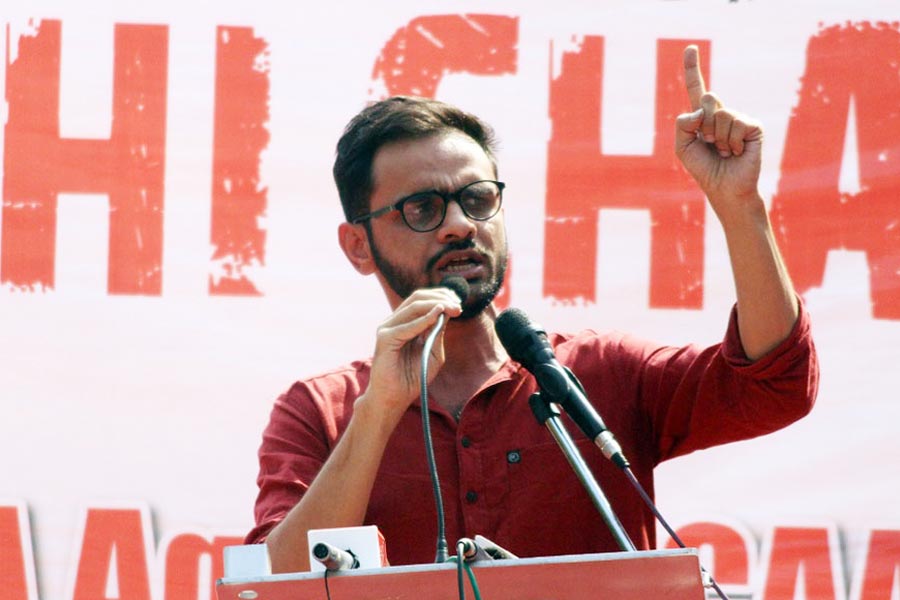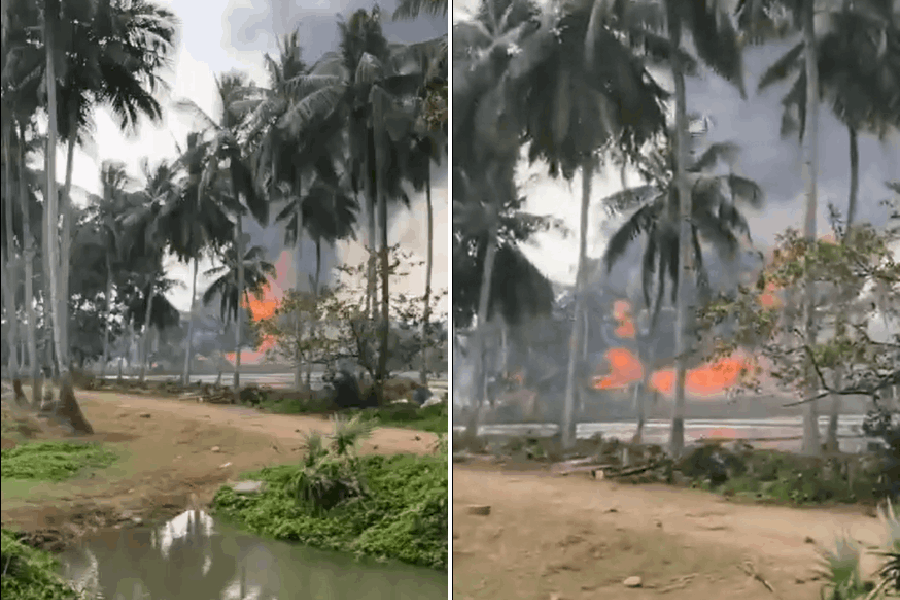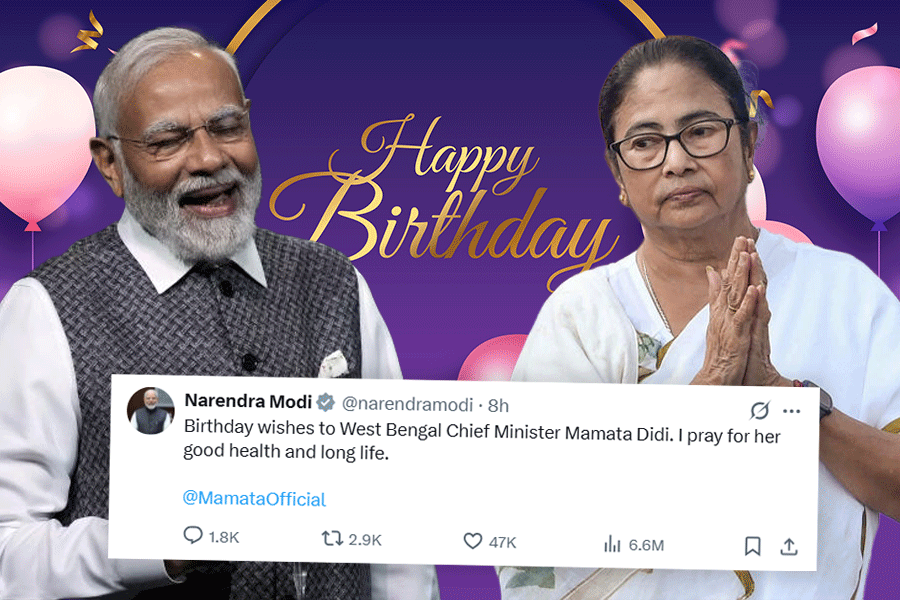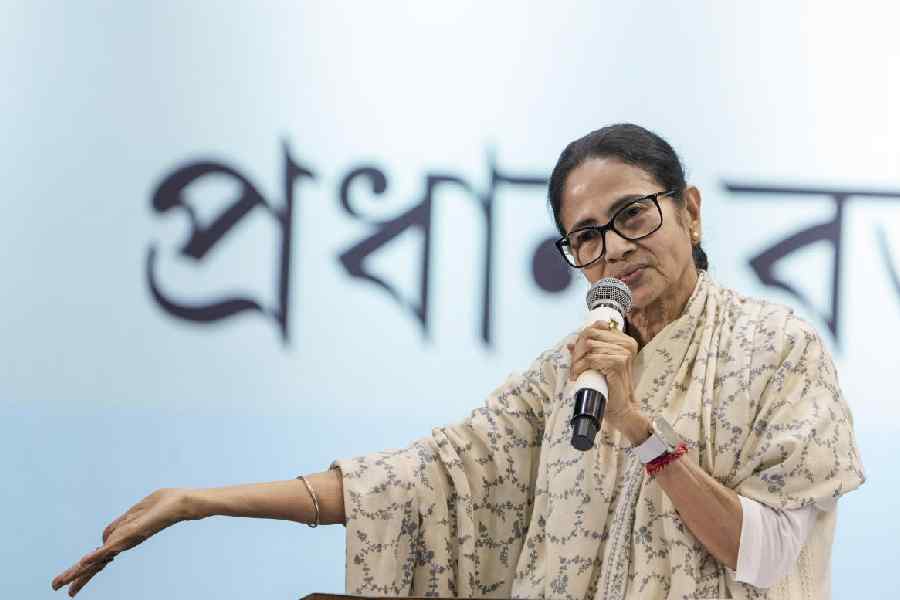Road accidents have killed more Kumbh pilgrims over the last 10 days than the January 29 stampede, going by government figures, highlighting the havoc that a sudden surge in traffic can wreak on India’s chaotic highways.
At least 49 pilgrims died and 82 suffered injuries in 16 accidents in Uttar Pradesh between February 7 and 16, anecdotal accounts from police sources suggested.
This comfortably outstrips the Yogi Adityanath government’s stampede toll, which has stuck stubbornly to 30 despite unofficial sources suggesting far higher body counts.
Police sources suggested that one reason for the high accident toll could be fatigue among the drivers, who have been ferrying pilgrims to and from the Kumbh non-stop, driving large distances without enough sleep or rest. Many of the accidents involved vehicles packed with pilgrims, driving up the casualty figures.
A senior police officer in Lucknow suggested that the lack of arrangements for the ordinary pilgrims — the fallout of a “VIP culture” that has been blamed for the January 29 stampede — had a bearing on the road deaths too.
“Travel to the Mahakumbh has been arduous. It takes the pilgrims six to eight hours to reach the Mahakumbh after they have arrived on the borders of Allahabad, where thousands of vehicles have been stranded since the Mela began on January 14,” the officer told The Telegraph.
“The drivers and the poorer devotees are not getting enough rest because there are no arrangements for their stay in the Mela area. One side-effect of that is being witnessed on the roads.”
He added: “We had thought that devotee arrivals would decrease after the Shahi Snan on Basant Panchami, February 3. However, an even larger number of pilgrims seem to have planned to visit after that date, hoping for a hassle-free pilgrimage.”
One reason the common devotee cannot stay in Allahabad is that hoteliers are charging anything between ₹5,000 and ₹80,000 per night for rooms that cost ₹2,000-3,000 before the Mela began. Many hotels closer to the Kumbh area increased the rates further after Basant Panchami, seeing the rise in arrivals.
With many pilgrims forced to stay at railway stations — which are witnessing ever-increasing numbers of devotees arriving and leaving — the platforms are crowded and chaotic. This has compounded the authorities’ worries, especially after Saturday night’s stampede at a Delhi railway station.
At the Lucknow, Deendayal Upadhyaya Nagar, Gorakhpur, Bareilly and many other railway stations, people were running from one platform to another to catch Allahabad-bound trains on Sunday.
Eyewitnesses said the Prayagraj Junction, Prayagraj, Naini and Jhusi stations were packed with pilgrims, with no room left for more to alight there.
Shashikant Tripathi, chief PRO of North-Central Railway, told reporters in Allahabad: “We have developed a protocol for Prayagraj and eight other stations in the districts about who should be allowed on the platforms.”
Samajwadi Party president Akhilesh Yadav blamed the road accidents on “mismanagement at the Mahakumbh”.
Some of the road accidents since February 7 and their toll:
• A minibus rammed a parked bus on the Purvanchal Expressway in Barabanki district on Sunday morning, killing 4 devotees and injuring 20. They had arrived from Nanded, Maharashtra, and were headed to Ayodhya after bathing at the Kumbh. Three of the dead have been identified as Deepak, Sunil and Anusuiya.
• On Sunday afternoon, a bus hit a car about 1km from the morning accident spot, killing three pilgrims from Jammu: Padm Prakash, 67, Yudhveer Gupta, 50, and Savita Sharma, 65.
• Pawan Sharma, 40, was charred to death on the Agra-Lucknow Expressway in Firozabad on Saturday when a bus carrying 50 Kumbh pilgrims back home to Nagaur, Rajasthan, caught fire at 4am. Twenty-four injured have been admitted to hospital.
• On Friday night, 10 pilgrims died when their Bolero collided with a bus on the Prayagraj-Mirzapur Highway in the Meja area of Allahabad district. They were headed to the Kumbh from Korba, Chhattisgarh.
• Four pilgrims from Bihar died when their tempo hit a tractor-trolley in Kushinagar on Thursday, February 13. They were returning from the Kumbh.
• Two pilgrims headed to the Kumbh from Delhi died when two double-decker buses collided in the Utranwa area of Allahabad on February 11.
• Nine devotees from various states died in Fatehpur, Sonbhadra and Etawah on February 10. They were returning home from Kumbh. A dozen suffered injuries.
• Four returning pilgrims died in Sonbhadra and three in Hamirpur in vehicle collisions on February 9. Four suffered injuries.
• Two pilgrims were killed and 10 injured in Bhadohi on February 8 when a jeep hit them as they stood by the road while the driver and his helper changed a flat tire.
• Two devotees were killed and 10 injured on the Yamuna Expressway in Tappal, Aligarh, when a jeep and a minibus collided on February 7. Both vehicles were carrying Kumbh pilgrims.
• Five pilgrims died in vehicle collisions in Varanasi, Fatehpur and Jhansi on February 7.










